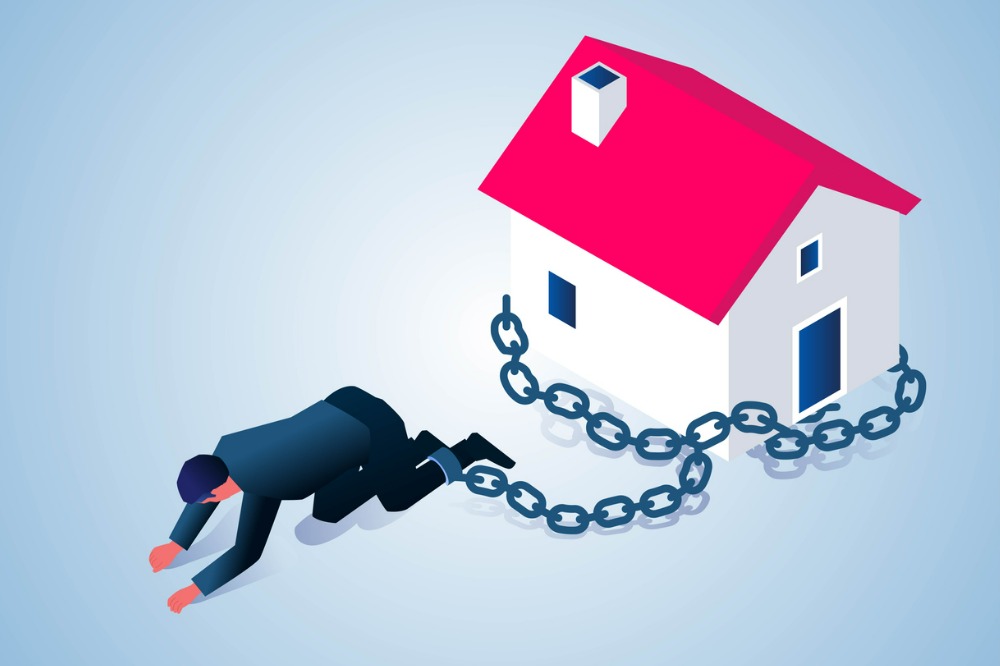The national median house price could fall by $150,518 by the end of next year, with prices expected to rebound in 2024.
This was according to RateCity.com.au’s analysis of ANZ’s new property price forecasts based on CoreLogic’s adjusted median values from December 2021.
In Sydney, median house price is expected to dip even further, with an estimated drop of $204,543 by the end of 2023, bringing it to $1,141,650. Also by the end of next year, Melbourne’s median house price could fall by $128,141 to $836,809 while prices could slip by more than $160,000 in Brisbane and Adelaide.
RateCity.com.au showed how median house prices could fall by the end of 2023:
|
|
ANZ 2022 forecast
|
ANZ 2023 forecast
|
Dec 2023 forecasted median house price
|
Estimated drop July 22 – end 2023
|
|
Australia
|
-8%
|
-9%
|
$666,141
|
-$150,518
|
|
Sydney
|
-14%
|
-6%
|
$1,141,650
|
-$204,543
|
|
Melbourne
|
-11%
|
-6%
|
$836,809
|
-$128,141
|
|
Brisbane
|
1%
|
-12%
|
$719,669
|
-$164,667
|
|
Adelaide
|
4%
|
-17%
|
$539,452
|
-$166,182
|
|
Perth
|
1%
|
-12%
|
$498,468
|
-$88,556
|
|
Hobart
|
-9%
|
-8%
|
$648,310
|
-$134,438
|
|
Darwin
|
0
|
-12%
|
$493,506
|
-$96,242
|
|
Canberra
|
-7%
|
-9%
|
$871,949
|
-$175,963
|
Noted: ANZ property price forecasts, CoreLogic index-adjusted median values, Dec. 31, 2021 and 31 July 2022.
Following steep price drops between now and the end of 2023, property prices are tipped to lift in all capital cities in 2024 but will remain substantially lower in 2024 than they are today, RateCity.com.au analysis showed.
People who don’t own a decent portion of their property may find themselves unable to refinance for several years, putting them in the so-called “mortgage prison,” RateCity.com.au warned. This is because in order to refinance, borrowers must own at least 20% of their property, otherwise their new lender will hit them with costly lenders’ mortgage insurance, which could negate any potential savings. Borrowers in negative equity are likely to find lenders aren’t willing to take them on at all.
Most likely to be impacted by this are the first-home buyers who took advantage of the federal government’s low-deposit scheme.
Someone who bought a median-priced house in Sydney in December 2021 with a 10% deposit could owe the bank 8% more than their home is worth by the end of 2023, and almost exactly as much as the property will be worth by the end of 2024, if ANZ’s forecasts are realised, RateCity.com.au analysis showed.
Melbourne home loan borrowers may find themselves in a similar situation. Those who bought their house in December 2021 with a 10% deposit could owe the bank 4% more than their home is worth by the end of next year.
“This is a classic case of what goes up, can come down,” said Sally Tindall, RateCity.com.au research director. “However, the drops aren’t likely to come close to the huge property prices gains over the last couple of years. As interest rates rise, people are finding they can borrow less, because they have to pay more of their monthly salary to the bank in interest. This is applying a handbrake to Australia’s property market, and with the RBA poised to potentially hike by another on to 1.5 percentage points, the drops are likely to keep on coming for the remainder of this year and into 2023. Falling prices might finally provide some first-home buyers with a window in, but it won’t be an easy one to climb through. Would-be buyers now have to pay significantly higher interest rates on prices that are still likely to be well above pre-COVID levels.”
Tindall noted that while ANZ expects the market to turn back around in 2024, a rise in demand from people on the hunt for a good deal could turn around the market sooner than expected.
“Investors could also come back to the market early if rents continue to rise at the same time property prices fall,” she said. “People who bought at the peak shouldn’t let news of property price drops get them down. What’s important is for them to keep their head down and their mortgage repayments up. Increasing numbers of people will find themselves trapped in mortgage prison, stuck with their current lender, until they can build their equity above 20%. Being in mortgage prison isn’t a life sentence, but based on current property forecasts, it could take several years to get out.”
Tindall advised those whose equity could fall below 20% in coming months to do a health check on their mortgage now and consider their options before it’s too late.


